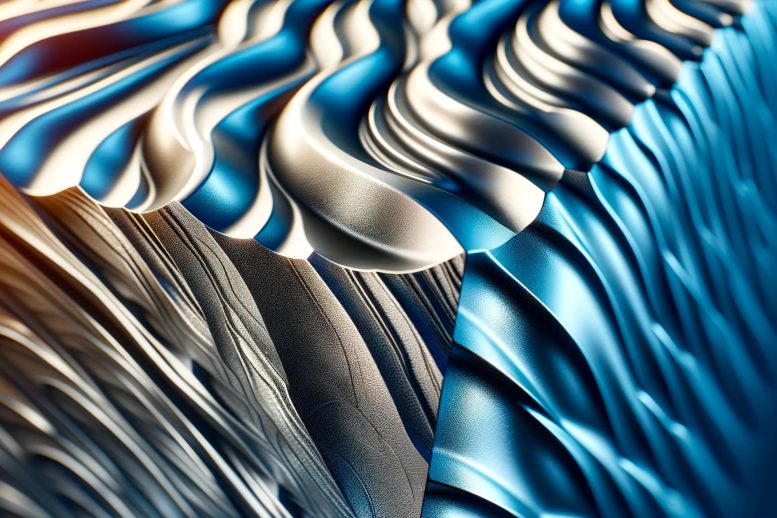
University of Illinois researchers have developed a faster, more insightful method to model diffusion in alloys using “kinosons” and machine learning, potentially revolutionizing how this critical process is understood and studied. Credit: SciTechDaily.com
Researchers at the University of Illinois Urbana-Champaign have redefined diffusion in multicomponent alloys by breaking it down into separate elements they term “kinosons.” Employing machine learning, they analyzed the statistical distribution of these elements, enabling them to model the alloy and determine its diffusivity much more efficiently than by calculating entire trajectories. Their findings were recently published in the journal Physical Review Letters.
“We found a much more efficient way to calculate diffusion in solids, and at the same time, we learned more about the fundamental processes of diffusion in that same system,” says materials science & engineering professor Dallas Trinkle, who led this work, along with graduate student Soham Chattopadhyay.
Diffusion in solids is the process by which atoms move throughout a material. The production of steel, ions moving through a battery and the doping of semiconductor devices are all things that are controlled by diffusion.
Challenges in Simulating Diffusion
Here, the team modeled diffusion in multicomponent alloys, which are metals composed of five different elements—manganese, cobalt, chromium, iron, and nickel in this research—in equal amounts. These types of alloys are interesting because one way to make strong materials is to add different elements together like adding carbon and iron to make steel. Multicomponent alloys have unique properties, such as good mechanical behavior and stability at high temperatures, so it is important to understand how atoms diffuse in these materials.
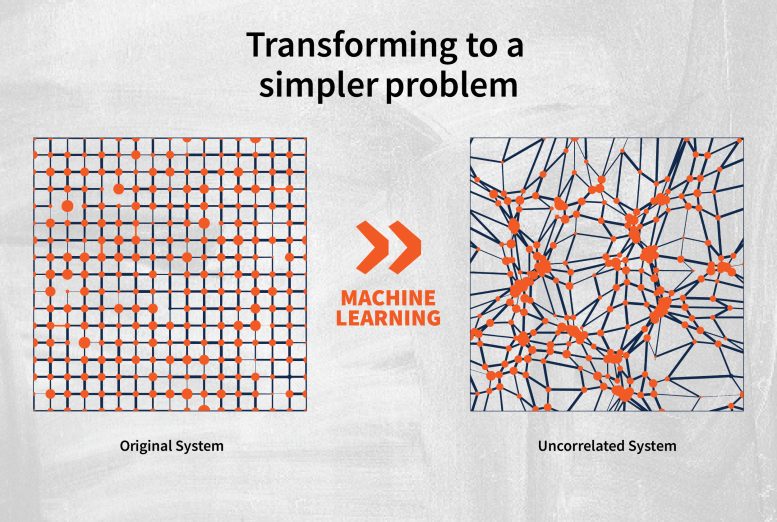
A series of “states” (dots) connected with “transitions” (lines) in a complex system. Bigger dots correspond to states where more time is spent during simulation, and thicker lines show faster transitions. To look at long trajectories with many jumps takes a lot of computational effort; the machine learning model converts this system (left) to an equivalent one that has the same diffusivity behavior, but where the calculation of diffusion is much simpler (right). In the uncorrelated system, each jump corresponds to a “kinoson,” a small contribution to diffusion and the sum of all kinosons gives the diffusivity. Credit: The Grainger College of Engineering at the University of Illinois Urbana-Champaign
To get a good look at diffusion, long timescales are needed since atoms randomly move around and, over time, their displacement from the starting point will grow. “If somebody tries to simulate the diffusion, it’s a pain because you have to run the simulation for a very long time to get the full picture,” Trinkle says. “That really limits a lot of the ways that we can study diffusion. More accurate methods for calculating transition rates often can’t be used because you wouldn’t be able to do enough steps of a simulation to get the longtime trajectory and get a reasonable value of diffusion.”
An atom might jump to the left but then it might jump back to the right. In that case, the atom hasn’t moved anywhere. Now, say it jumps left, then 1000 other things happen, then it jumps back to the right. That’s the same effect. Trinkle says, “We call that correlation because at one point the atom made one jump and then later it undid that jump. That’s what makes diffusion complicated. When we look at how machine learning is solving the problem, what it’s really doing is it’s changing the problem into one where there aren’t any of these correlated jumps.”
Simplifying Diffusion With Machine Learning
Therefore, any jump that an atom makes contributes to diffusion and the problem becomes a lot easier to solve. “We call those jumps kinosons, for little moves,” Trinkle says. “We’ve shown that you can extract the distribution of those, the probability of seeing a kinoson of a certain magnitude, and add them all up to get the true diffusivity. On top of that, you can tell how different elements are diffusing in a solid.”
Another advantage of modeling diffusion using kinosons and machine learning is that it is significantly faster than calculating long-timescale, whole trajectories. Trinkle says that with this method, simulations can be done 100 times faster than it would take with the normal methods.
“I think this method is really going to change the way we think about diffusion,” he says. “It’s a different way to look at the problem and I hope that in the next 10 years, this will be the standard way of looking at diffusion. To me, one of the exciting things is not just that it works faster, but you also learn more about what’s happening in the system.”
Reference: “Contributions to Diffusion in Complex Materials Quantified with Machine Learning” by Soham Chattopadhyay and Dallas R. Trinkle, 30 April 2024, Physical Review Letters.
DOI: 10.1103/PhysRevLett.132.186301
This research was funded by the National Science Foundation under Program NO MPS-1940303.

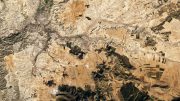
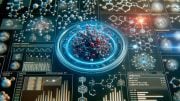

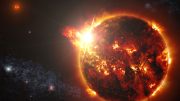
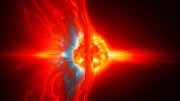
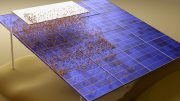


Be the first to comment on "A Quantum Leap in Alloy Research: Machine Learning Speeds Up Diffusion Studies by 100x"